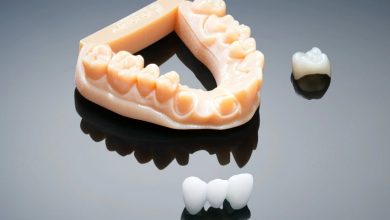Natural Herbal Diabetes Control

If you have diabetes, you may want to consider using some herbal remedies for this condition. The most common herbs to use are Barberry, Jamun seeds, Trigonella foenum graecum, Momordica charantia, and Nettle. Read on to learn more about the best natural remedies for sugar treatment and which ones might be best for you. These natural remedies are also effective in controlling the blood sugar level. You may also like to try the following natural remedies:
Barberry
The benefits of barberry are gaining much attention in the scientific community. There are several reasons why this berry is effective in controlling blood sugar levels. In addition to its many other useful properties, barberry can help in lowering lipid profiles and liver enzymes. Its antioxidant and anti-inflammatory properties are also obvious. Barberry also influences thyroid hormone secretion. These properties make barberry an interesting drug candidate for cardiovascular diseases and diabetes.
The active component of barberry is berberine. Berberine can boost insulin sensitivity and inhibit alpha-glucosidase, a hormone that controls insulin secretion. Berberine also inhibits adipogenesis, thereby acting as an anti-obesity and hypoglycemic agent. It also improves the function of liver enzymes, making it a potential hypolipidemic plant extract. This extract was traditionally used at two grams three times daily.
Berberine, oxycontin, and palmatine are some of the other substances found in the barberry. Berberine, the most prominent alkaloid in the fruit, has antioxidant and hepatoprotective properties. Other components of barberry are vitamin C, beta-carotene, lutein, zeaxanthin, and chromium. The alkaloid, berberine, can be found in all parts of the plant.
Researchers have studied the effects of barberry on blood glucose levels in diabetic patients. Barberry is a red fruit that has been used in traditional medicine for centuries. In a small study conducted in Iran, researchers found that 1,000 milligrams of barberry extract daily along with metformin decreased the levels of several markers of Type 2 diabetes in diabetic patients. The results showed that the extract significantly decreased fasting blood sugar levels and HbA1c in the barberry-treated group compared to the placebo group.
Jamun seeds
Studies suggest that the use of Jamun seeds powder may improve glycemic control in people with type 2 diabetes. A multicentric trial should be conducted to evaluate the effectiveness of this supplement. Further research is needed to identify the optimal dosage and duration of the treatment. In the meantime, people with diabetes should use Jamun seed powder as adjunctive therapy for diabetes. The following are some of its health benefits:
The plant has several medicinal properties and is used in traditional medicine for the treatment of diabetes. Studies have demonstrated that its active ingredients may reduce oxidative stress and inhibit lipid peroxidation. The fruit also increases glutathione synthesis, suppresses inflammatory cytokines, and increases Nrf2, a type of cellular transcription factor. Further studies are needed to investigate the mechanisms behind the actions of Jamun seeds.
Two studies on rats have examined the effects of Jamun seed extract on their blood glucose levels. According to their findings, Jamun seed extract reduces serum glucose levels significantly in diabetes-prone male rats when fed in different doses. In addition, a study by Sharma et al. evaluated the effects of Jamun seed ethanolic extract on diabetic rats. The study revealed a 65% reduction in blood glucose levels, suggesting that Jamun seed has a hypoglycemic effect.
The Jamun compound has been used since ancient times to battle bacteria and other pathogens and protects the body against different infections. Its strong antiviral, antibacterial, and antifungal properties also make it useful for wound treatments. It also helps regulate blood pressure and boosts immunity. Jamun seeds are a good source of antioxidants. And because they are loaded with vitamin A and C, they are also good for preventing cancer.
Trigonella foenum graecum
Many medicinal plants have shown promise as effective treatments for diabetes. One such plant is Trigonella foenum graecum, which is also known as fenugreek. This plant has several benefits, including reducing blood glucose, lowering triglycerides, and increasing the activity of monoamine oxidase. In addition to its anti-diabetic and anti-cholesterol properties, it has an added advantage over the other drugs used for diabetes.
Researchers studied the effect of a Trigonella foenum graecorum seed powder solution on the lipid profile in newly diagnosed type II diabetic patients. Patients were included if they had abnormal fasting glucose levels and an abnormal lipid profile. Although the study was limited, the results suggest that Trigonella foenum graecum is a viable alternative to standard diabetic medications.
The effects of fenugreek on blood sugar levels are still being investigated. Recent studies indicate that it can lower blood glucose levels by inhibiting intestinal disaccharidases. The herb also lowers glycohemoglobin in diabetic mice. In addition, it stimulates insulin secretion from isolated pancreatic islets in diabetic rats. The benefits of Trigonella foenum graecum for diabetes control are still in their early stages.
The findings of this study suggest that the benefits of T. foenum graecum for diabetes control may outweigh the risks associated with its use. In a recent study, researchers found that this plant can control blood glucose levels by up to a third in patients with the best medicine for type 2 diabetes. The findings support previous studies that show the benefits of Trigonella foenum graecum. There is currently no other plant that can achieve this level of insulin in humans.
Momordica charantia
The benefits of Momordica charantia are reflected in the plant’s medicinal and anti-diabetic properties. The medicinal potency of the plant makes it a potential adjuvant to allopathic treatments. Diabetes is a leading cause of death worldwide and is a contributing factor to the development of cardiovascular diseases. Several recent studies have shown that M. charantia can lower blood glucose levels and improve insulin sensitivity.
In an experiment conducted on rats, Momordica charantia fruit juice was given to the animals for 14 days before inducing diabetes. In addition, MCP decreased serum lipids and oxidative stress and reduced pancreatic MDA. The results of this study are encouraging. The herb is a natural herbal remedy for diabetes and has been used for many centuries. It is a valuable addition to your diet and health regimen.
A popular herb for diabetes management, Momordica charantia is used as a laxative and tonic. It is also referred to as bitter melon or karela. The plant is a tropical vine and is cultivated in many countries throughout Asia and South America. Its bitter taste and anti-diabetic properties have made it a popular choice for treating diabetes in Asian and Latin American regions. It contains several nutrients, such as p-insulin, polysaccharides, triterpenes, and proteins.
The research team used cell-culture techniques to determine the effects of Momordica charantia on skeletal muscle cells. They found that daily intake of M. charantia fruit juice reduced the amount of 14C-D-glucose absorbed by the jejunal brush border membrane vesicles. Further, the researchers found that M. charantia stimulated glucose uptake in skeletal muscle cells.
Gymnema
The use of Gymnema in treating diabetes has been around for centuries. The herb is also used for its various health benefits, including cardiovascular health and weight loss. Although the plant’s antidiabetic properties are well-known, there are still many questions about the benefits it can have on diabetes. For now, there is only limited clinical evidence to support its use. However, modern research indicates that Gymnema Sylvestre extract can positively affect cholesterol levels.
While few human trials have studied gymnema’s effects on blood sugar and lipids, the results suggest that the herb may have beneficial effects on diabetes. Many patients with diabetes have high lipid levels, and the herb may help prevent or reduce the risk of developing dyslipidemia.
However, people with diabetes should still take their regular medications, including insulin. Gymnema isn’t a substitute for diabetes medication, and lowering high blood sugar can be dangerous. People should only take the herb under a physician’s supervision. It is advisable to check your blood sugar levels more often and increase the dosage accordingly. Women should not take Gymnema if they are pregnant or breastfeeding. Also, it is advisable to stop using it two weeks before surgery.
Researchers have shown that the herb Gymnema Sylvestre improves glucose metabolism in rats with moderate diabetes. However, when supplemented at a dosage of 0.6 grams per day, Gymnema reduced blood glucose levels. Additionally, it improved their lifespan. Despite this, the study concluded that more than six grams a day did not improve blood glucose management.




